Tushar BurmanAug 16, 2019 15:03:51 IST
In my memory, never before has a car buying decision been more difficult than it will be when Kia announces Seltos pricing on 22 August. Already, we’ve seen a rush on the showrooms by customers hoping to get a closer look at the car. Even if you have the money and the blind faith in the company (or this review), you’re going to have to take some time to decide which among the 16 variants to buy.
Why 16 variants, you ask? Three engine options, four transmissions, thirteen colours, two trim lines with three grades each. We don’t have all the information for the math to be clear, though we don’t think having all the information is going to be any less confusing. But one thing is for sure: the Indian auto consumer has not had this much choice in a single product.
[embedded content]
What we know so far: there will be 1.5l petrol,1.5l diesel and 1.4l turbo-petrol motors. Transmissions include manual, IVT automatic (Kia’s version of CVT), 6-speed torque converter and 7-speed dual-clutch automatic. Every engine is mated to the appropriate transmission, and we were able to sample the manual 1.4 petrol, auto 1.4 petrol and auto 1.5 diesel on a recent press drive in Goa.
With these many products to sell, it was unsurprising to see that Kia had invited over 200 journalists representing various regions, experience levels and liquor-holding capacities to the event, and made available a vast number of cars to drive – over 30, if I counted correctly. You could almost smell the success, something that’s been lacking in some recent entrants.
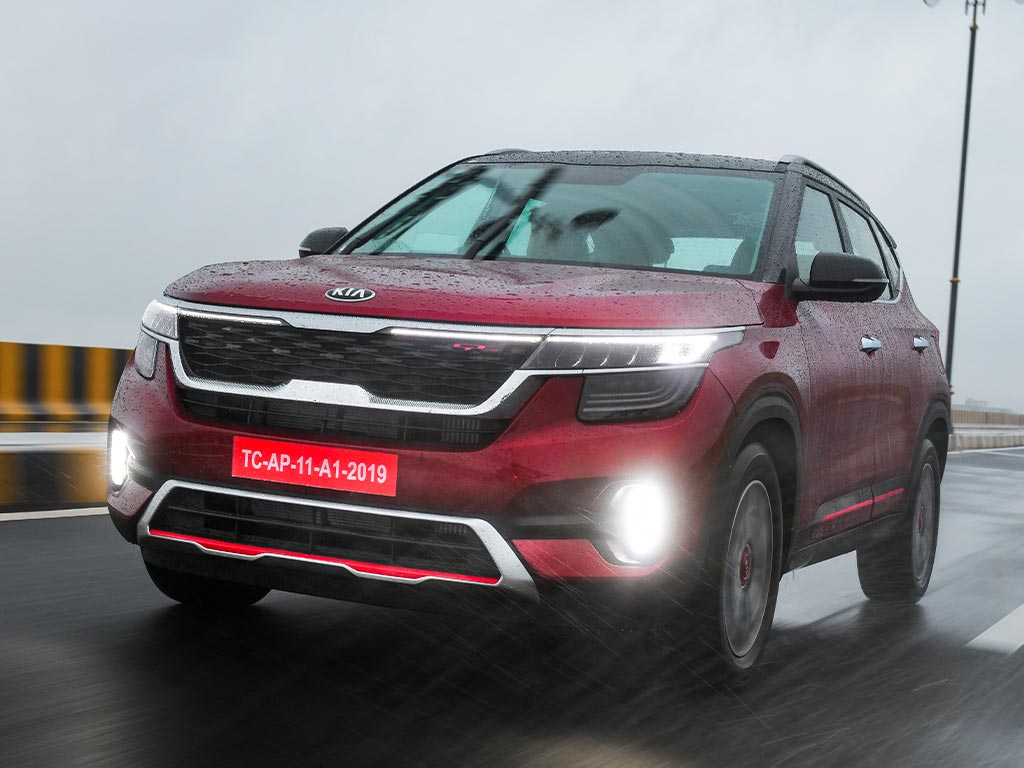
The Kia Seltos will be available in at least 16 variants.
The drive
Kia admits that a significant number of enquiries have come in for the automatic variants. We’re usually starved for diesel automatic choices, so we were pleased to drive this variant first. The Seltos is a mid-size SUV for India, and while it is a global model, it is engineered and packaged uniquely for the Indian market. Kia says that the Indian model Seltos actually has a higher number of features than elsewhere in the world. The 1.5-litre turbodiesel generates 115 PS of power and 250 Nm of torque. These are marginal numbers, compared to the competition, but that’s exactly why we were so impressed. The pairing with a smooth-shifting 6-speed torque convertor automatic is excellent, and the diesel auto is sprightly to drive.
In essence, the feeling is that you are getting more performance than the numbers suggest, and it is complemented by the well-tuned ride quality. The aim is to give customers a slight comfort bias, and we’d say mission accomplished. The ride is comfortable, but not squishy and made for a fun, engaging drive in rain-lashed Goa. Ground clearance is good enough that fording two feet of water felt uneventful. The Seltos was even able to keep up with the more enthusiastic testers who did donuts in the car and took it to mildly off-road locations for photo opportunities. The India-spec Seltos does not get 4×4 yet, so buyers will have to limit their adventuring.
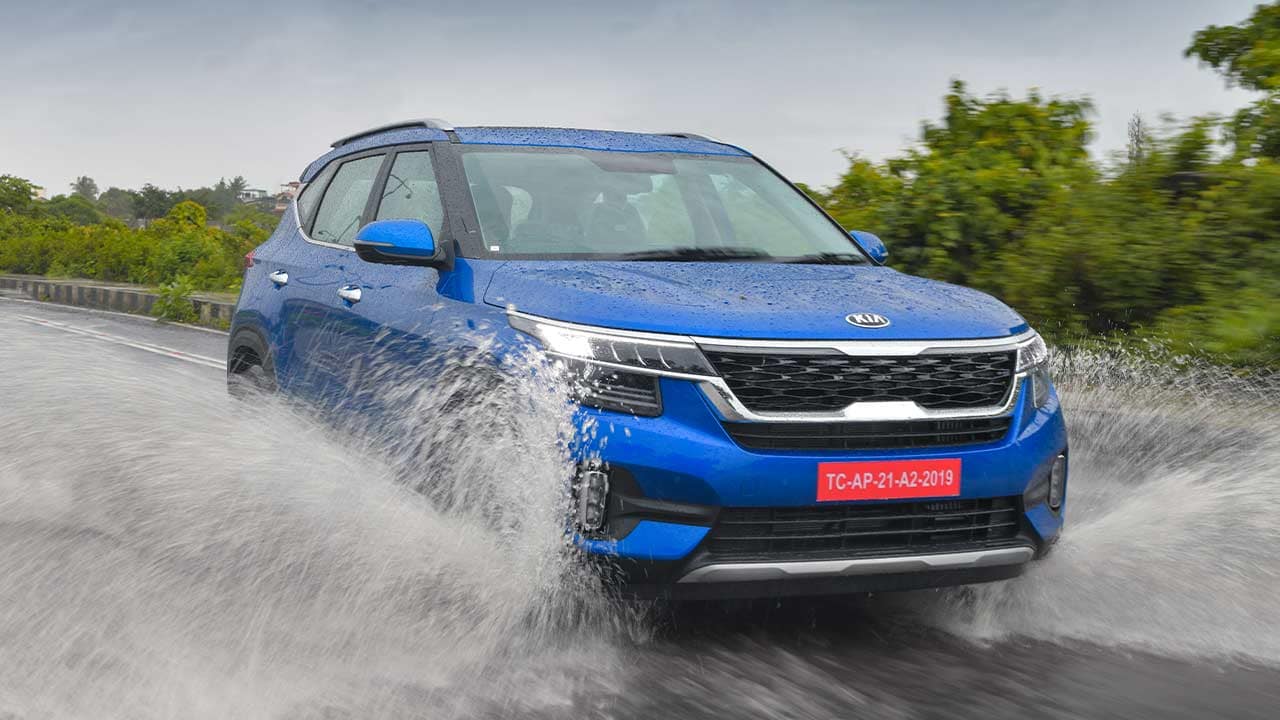
It doesn’t have 4×4 yet, so you’ll have to make do with splashing through puddles for now.
Swapping cars to a 1.4GDI turbo-petrol was just as engaging. The new motor makes 140 PS and 243 Nm, which means it’s right up there with the diesel in raw pulling power. And what a joy it is to drive. It’s been a while since I drove a fun, engaging petrol with a manual transmission, and this is definitely one for the enthusiast. The overriding feeling is of ‘ease’, ease in ride quality, ease in steering – the wheel is light in the hand, but not Hyundai-light – and ease in city conditions. Kia has tuned the experience for the 20-80 kph city range, and on Goa’s twisty and narrow roads, the Seltos was point-and-squirt. The engines are also quick to rev, so one needs to mentally adjust if coming from a more sluggish car.
On to the range-topper (or so we thought) – the 1.4GDI 7DCT automatic model. A dual-clutch transmission is by design, quick to shift and usually seamless. This is certainly the case with the Seltos. With the automatic petrol, you uniquely get driving modes – ECO, Normal, Sport, among three more for other terrain. In our short drive, I found the Normal mode to be sporty enough for the conditions, with Sport being a bit aggressive for the wet, tight roads. The turbo motor is dead below the boost zone, but that is to be expected. It is of no concern with the automatic, but needs care in the manual, if starting off on an incline. Once again, a point-and-squirt experience. The brakes deserve special mention; Kia has taken pains here.
A minor niggle is engine noise, which exists on the diesel, and strangely also on the turbo petrol models. We’ve seen similar problems fixed with tweaks on other SUVs, so perhaps Kia too will take note of feedback. In brief, the motors and drive are ummeed se zyada!
The vibe
Comfort levels are top-notch in the Seltos. Upholstery feels premium on the first touch, colours are well-chosen and textures employed cleverly. Kia has managed to cover only a small portion of the dash in leatherette, and yet achieved an experience superior to competitors who’ve used the whole sofa shop inside their cars. At worst, the door plastics could have been a touch nicer. The glass area is large, the A-pillar is small and the feeling on the inside is very airy. Combined with the saree-shop variety in the features, the Seltos comes off feeling ‘balcony’, rather than ‘stall’. Kia is targeting a 37-year-old buyer on average, so I’m assuming readers of that age will get that cinema reference.
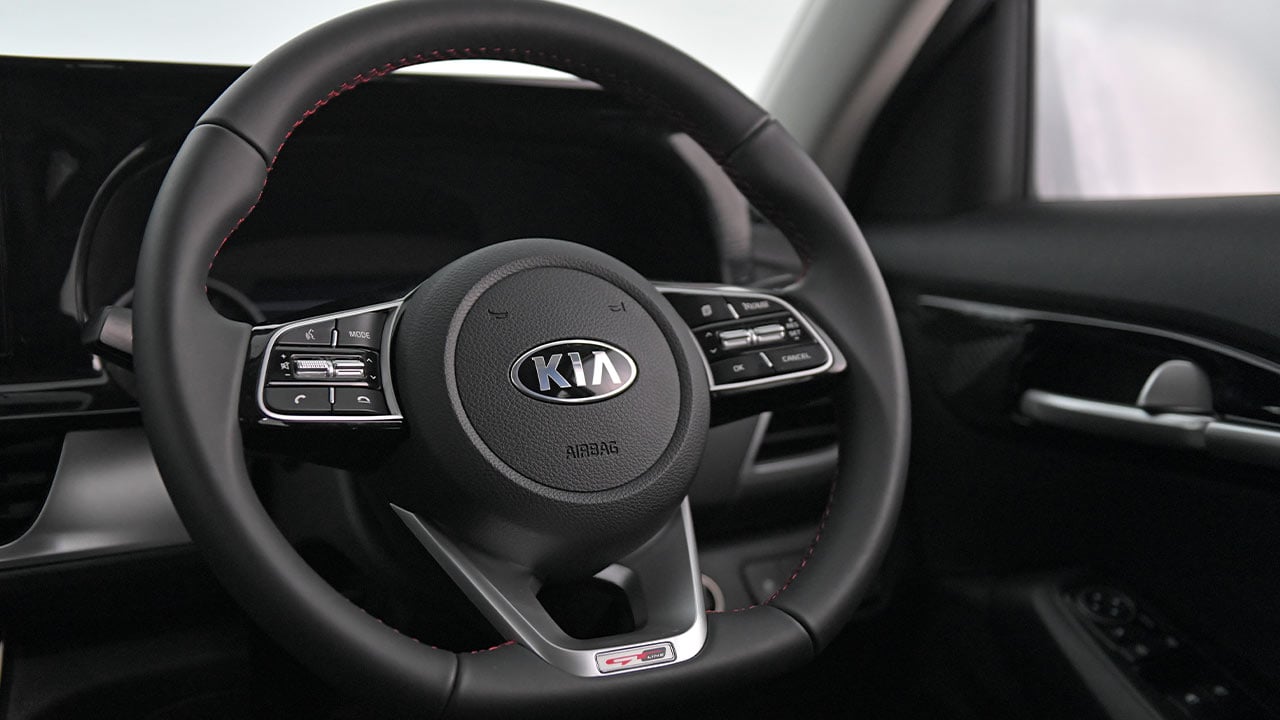
The interior of the Seltos feels expensive.
There are a lot of firsts in the Seltos, especially for the category. A heads-up display, ventilated (cooled) seats, a unique LED lighting package, large main and console screens, as well as a comprehensive connected-car experience through the UVO app/service, which will take a whole other review to cover in detail. They all add up to a premium experience which, we believe, customers may be willing to pay a premium for.
The saree shop
Sixteen variants! That’s how many choices a potential Kia customer has to go through. It’s hard enough picking between two or three brands, so when you throw these many features into the mix, things will get complicated. I hope Kia dealers have large waiting rooms; they’ll need them. And tea, and maybe some kachoris.

Kia showrooms will be able to keep a local chaiwala in full-time employment. Image: Reuters
The feature list is impressive and adds real value to the car. Recently, manufacturers have realised that there’s significant value to be added at relatively low cost in some cases – a better infotainment screen, smartphone support, rear AC vents, and other relatively mundane bits. Kia is taking things quite a bit further. An electric sunroof on a mid-size SUV is a rarity (Jeep does it better, with a panoramic option). We haven’t seen a heads-up display in anything this side of a luxury car. And it’s a good one too – retractable, with a large, easily readable screen that can be adjusted to match your angle of view perfectly. The HUD will display information such as speed and basic navigation, so the driver stays focused on the road.
Ventilated seats are another item borrowed from the luxury car options list. The nicely-done, perforated leatherette seats can be cooled at the touch of a button, and work well. The cooling is more rapid than in some high-end cars we’ve sampled, so it’s clearly tuned for the Indian climate. Appropriately, there’s no seat heating. Temperature control is taken very seriously in the Seltos; there are rear door sunshades too.
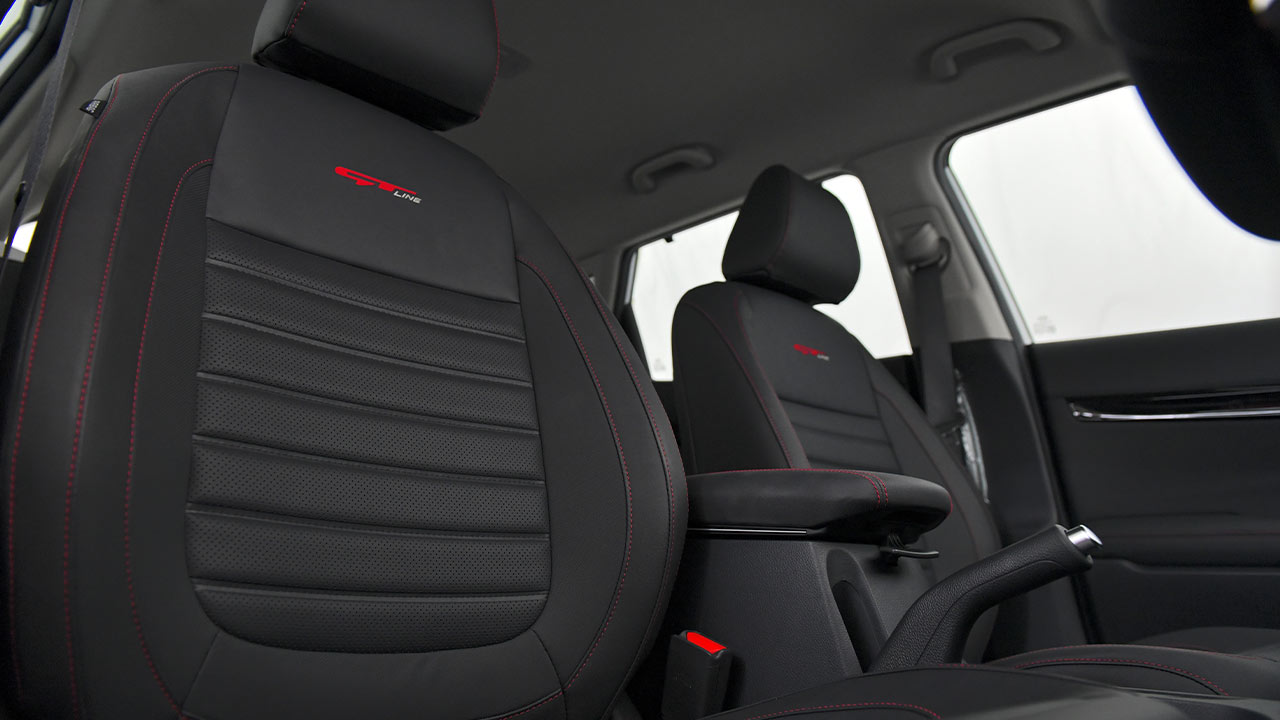
The ventilated seats are a nice touch.
Of course, LEDs must be present and accounted for these days, and the Seltos is like “lol! Hold my beer.” We’ve got LED DRLs, an LED light bar that goes across the front of the car, LED headlamps, and LED fog lamps. Round the back, we have LED ‘heartbeat’ taillamps. But wait, you also get LED mood lighting on the inside of the car, complete with customisable themes. No longer must you be limited by just a single colour to accentuate your night driving experience. If Kia threw in an incredibly convenient bullet mixie, vegetable chopper or crystal shree yantra with the Seltos, it would be weird but unsurprising – the bonuses sound like a teleshopping ad!
At this point, this review is going to start feeling a bit ridiculous or tiresome, but stick with it for more surprises. There’s an air purifier in the Seltos, and it has an LED display just like the one you use in your Gurgaon home to avoid emphysema. It is even controllable from anywhere in the world, using Kia’s UVO app, which is a nice segue into the Seltos’ connected-car features. Lots of cars these days have some sort of app connectivity, and Kia isn’t being left behind. The UVO app/service provides all the usual features you’d expect – GPS tracking, geofencing alerts, towing alerts, service reminders, among others. But UVO also allows you to start and stop the engine, AC, flash the lights and honk. You could, for example, start the motor, AC and air purifier to keep the car comfortable before you arrive. Very useful. There’s even a UVO button on the rear-view mirror that instantly connects you to a concierge who can help you in an emergency, or even directly send navigation instructions to the car screen – a feature we don’t think any car of this class has. The UVO services are included for three years, after which there will likely be some charge.
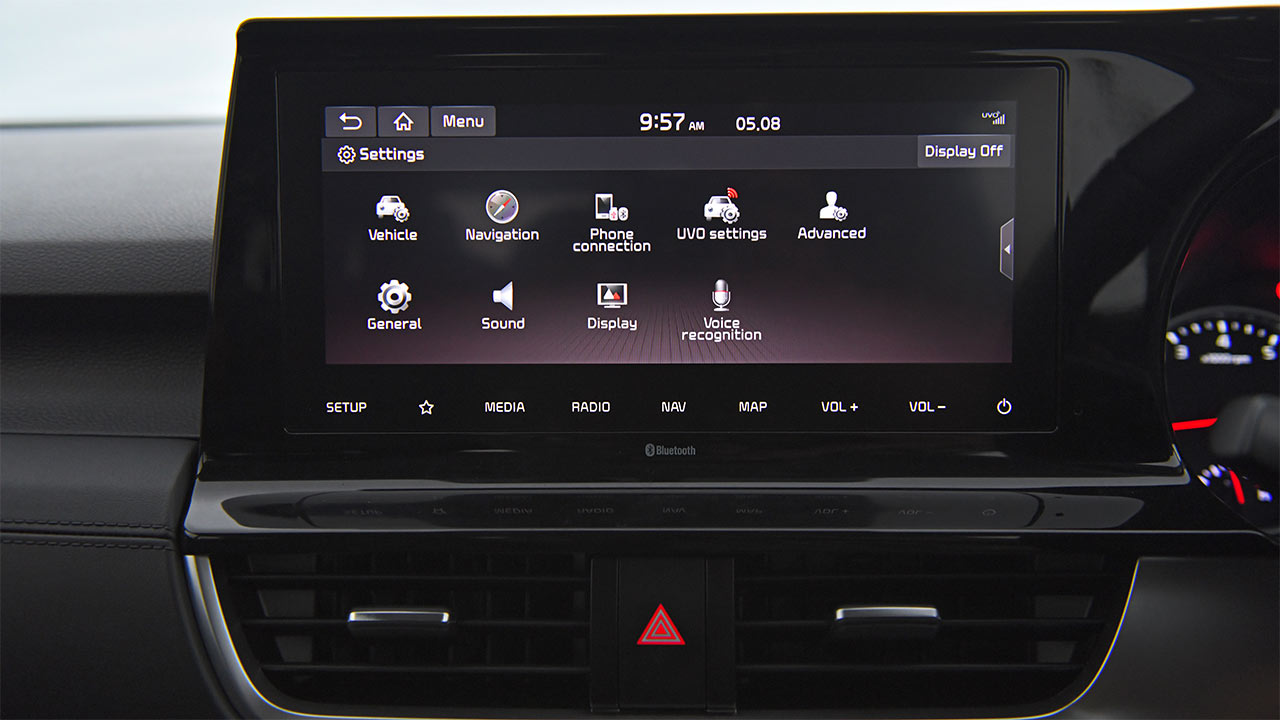
The feature-packed entertainment hub will keep the kids distracted.
Unfortunately, Kia partnered with Vodafone for the data connectivity SIM embedded in the car, and for most of the time we were in Goa, it didn’t work. In the city, it did briefly come online, and once again, the Seltos impressed with its voice recognition. To be blunt, most voice assistant features in cars – from the cheapest to the most expensive – are garbage. They simply do not work as well or as often as they should. The Seltos understood me directly and quickly. Saying “I’m feeling cold” will raise the AC temperature by two degrees, you can ask about the weather and so on. It’s quite quick, despite being cloud-enabled, but your mileage will vary depending on whether Vodafone’s network is available.
Step away from the screen, get a beverage and some snacks; we’ve come to the infotainment screens now. There’s a 10.25” main screen that flows neatly into the driver’s console, where there’s another 7” display that will even show you your blind spot from the 360-degree camera when you activate the turn indicators. Yes, there’s a 360-degree camera too, and yes, this blind spot feature is unprecedented as well.
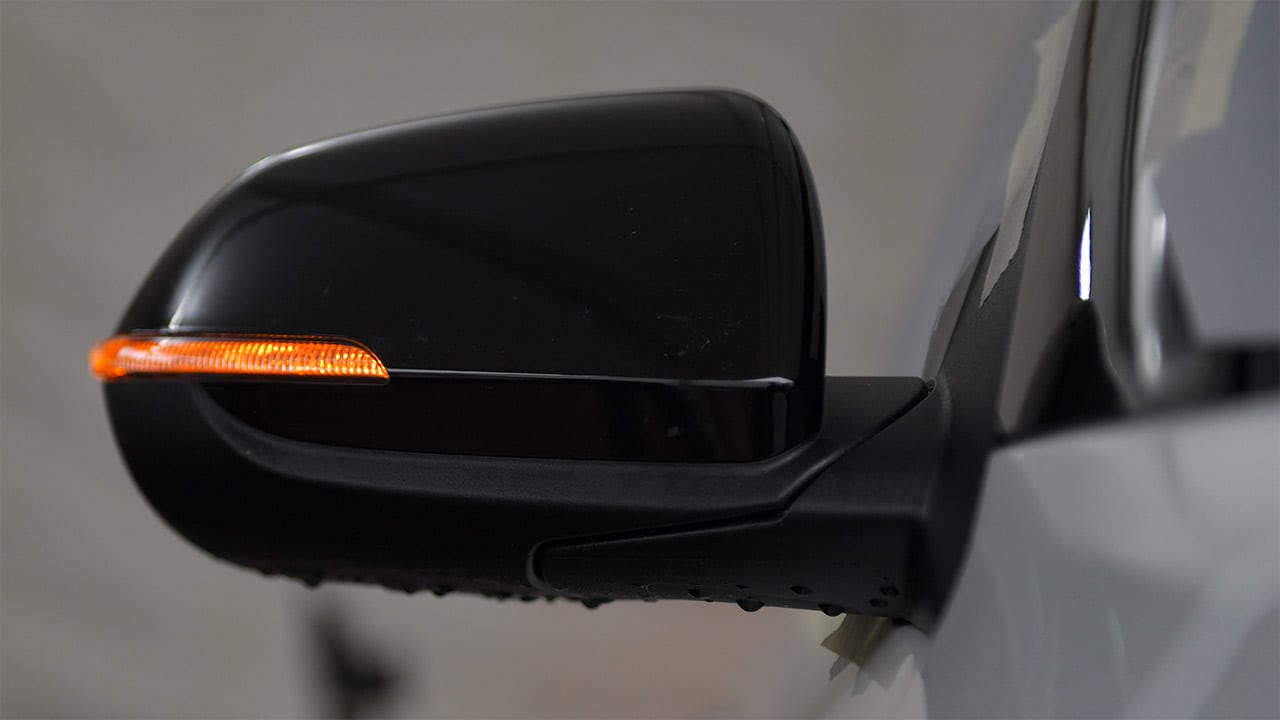
Complementing the mirrors is a 360-degree camera to help you keep an eye on those blind spots.
The touchscreen response is adequate, but for once, not best-in-class. Navigation is built-in, but like most systems in cars, it’s nowhere close to the ease of use of Google Maps. You always have the option of using Android/Apple connectivity with a USB cable, but the HUD navigation only works with the in-built system. On the top-spec Seltos models, you get an 8-speaker Bose music system complete with a central speaker and subwoofer. The result is pleasing audio with no tinkering required. The Bose sound signature tends to be bass- and treble-heavy already, so if you max out the equaliser on this system, I’m judging you. You probably also send good morning messages and unconfirmed rumours on WhatsApp to ‘educate’ your unfortunate contacts.
17” alloys? Yes.
Smart key? Yes.
Cruise control? Yes.
Powered driver seat? Yes.
Parking sensors? Yes.
Alloy pedals? Yes.
Am I tired of typing? Yes.
The catch
We don’t have prices for the Seltos yet, but officials tell us that as a new (and late) entrant into this competitive and growing market segment, Kia wants to be a player, so we can expect aggressive pricing. Regardless, anecdotal evidence (and Kia’s own data) shows that customers are opting for top-spec and automatic options in the range. Clearly, features and luxuries are high on the buyers’ list of priorities. And here’s the rub: we’ve been conditioned to expect maximum features with automatic variants, because automatics have traditionally been expensive.
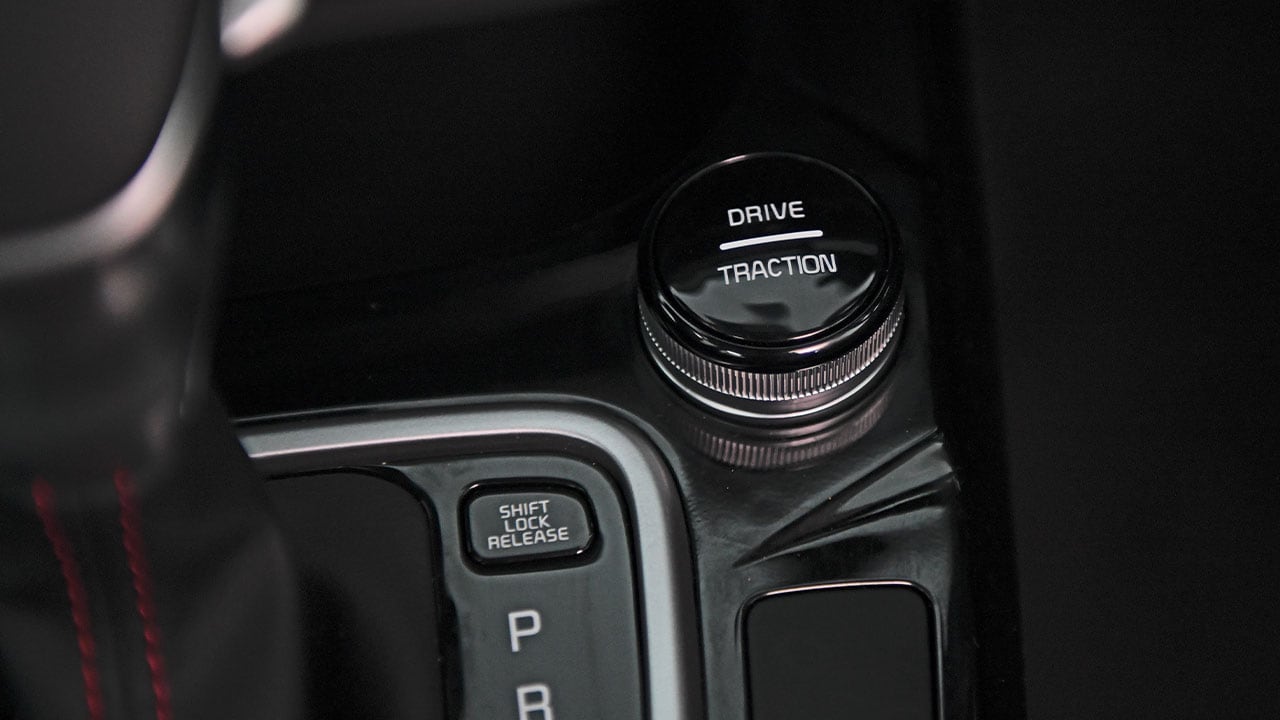
Kia offers three different transmission options on the Seltos.
Kia is offering a lot of automatics – a CVT, a Torque Converter and a 7-speed DCT. We suspect the DCT on the turbo-petrol is a pricey item, because that is the exact variant that may disappoint a potential buyer. You see, the GT line with the 1.4 turbo-petrol motor and 7DCT transmission is actually NOT the range-topper in terms of features. Sunroof? Nope. Ventilated seats? Sorry. Bose music? Sir, yeh jalebis try kijiye na! It’s surprising, but to get all those features, you must actually buy the manual variant. Even the diesel automatics have these features, so the omissions are confounding. Oh, except the HUD – that’s not in the diesel automatic. Brush up your Microsoft Excel skills, you’ll need them at the showroom.
The verdict
If Kia wanted to make a good first impression, they’re right on track. The right communication, the right product, the right features and the right media outreach (almost). They’re projecting success unlike any car launch in recent memory (And there have been a lot!). In our short drive in Goa, we were unable to pinpoint any significant downsides to the Seltos. The critical deciding factor will be price, which we will know on the 22nd. Even there, Kia is making the right noises, so fingers crossed. At this point, we have no problem recommending the Seltos. Just take a laptop and an empty stomach to the saree shop.
Find our entire collection of stories, in-depth analysis, live updates, videos & more on Chandrayaan 2 Moon Mission on our dedicated #Chandrayaan2TheMoon domain.
Post a Comment